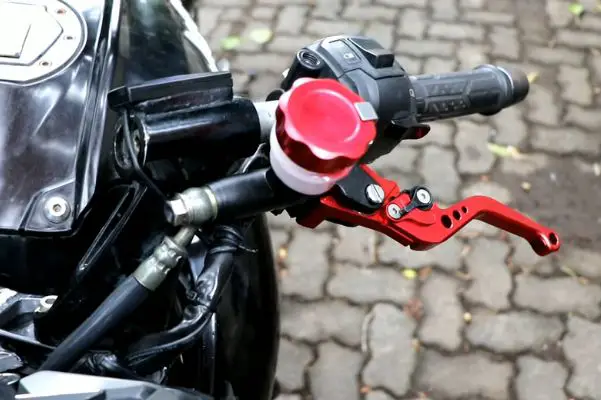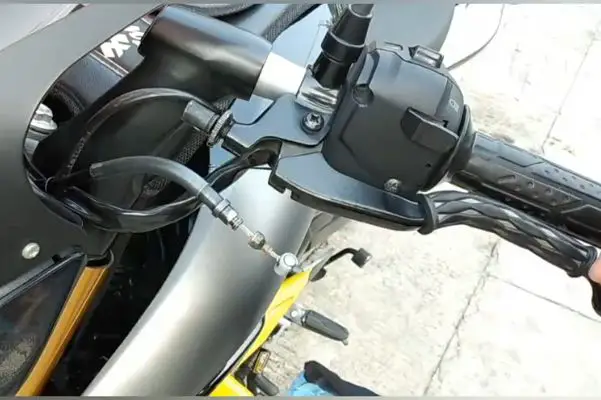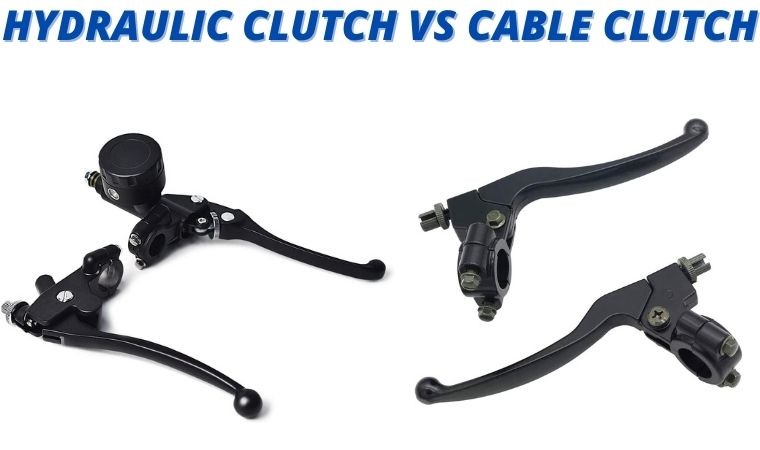There’s no doubt that how much a clutch is essential for a smooth driving experience. It ensures that the engine and paddle are adequately connected through the correct transmission.
But till now there’re two major types of clutch: Cable and Hydraulic clutch. So in order to disengage the gears while driving, both the clutches follow almost a common setup. That’s why there’s always debate on the topic of which is better: Hydraulic clutch vs cable clutch.
Between hydraulic and cable clutch, which is suitable for you, it depends on different things. For instance, maintaining a hydraulic clutch is more accessible than a cable clutch. At the same time, a cable clutch is cheaper than a hydraulic one. That means there’re several factors on which your decision can vary.
However, continue reading to find out which one suits your preference the best. Let’s get started.
What is a Hydraulic Clutch?

As hydraulic fluid is the main property that helps move the clutch disc, this clutch is known as the hydraulic clutch or hydro clutch. However, fluid tanks will control the pressure depending on how the clutch pedal will be pulled.
How Does Hydraulic Clutch Work?
The workflow of a hydraulic clutch is very similar to how a brake works on a motorcycle. Basically, a hydraulic clutch consists of multiple components, including a clutch master cylinder, clutch slave cylinder, clutch pedal, connecting push rod, and hydraulic metal.
These parts help the clutch to drive after pressing the pedal. Besides, you’ll find a clutch pedal attaching to a pivot point on the driver’s seat.
The clutch lever and rod are connected by a clevis pin on the pedal lever. The clutch master cylinder is directly connected to the rod.
So whenever anyone pushes the pedal, it’ll direct the rod to push in the master cylinder. And it’ll be causing the hydraulic fluid to push out of the master cylinder and enter the slave clutch cylinder.
That means, depending on the design, fluid will lead the clutch slave cylinder to push the clutch pedal.
This is how a hydraulic or hydro clutch works. Yet as it’s a closed system remember to change the clutch fluid regularly.
Also, check whether this is right or wrong fluid as the wrong fluid can damage the seals and cause leaks whenever you use the liquid.
Benefits of Hydraulic Clutch
- It doesn’t need manual engagement.
- Better performance.
- It’s easier to push the pedal in a hydraulic clutch.
- Hydraulic clutch produces low friction.
- More reliable than a cable clutch.
Drawbacks of Hydraulic Clutch
- Circulation is required in hydraulic clutches.
- Expensive repair or replacement.
What is A Cable Clutch?

A cable clutch (or Mechanical clutch) is a steel wired clutch that connects the clutch linkage to the clutch pedal. So By releasing the clutch pedal, the clutch cable pushes on the clutch linkage and allows you to change the transmission safely.
However, the mostly mechanical clutch is used on manual transmission vehicles.
How Does Cable Clutch Work?
The working system of a cable-actuated clutch is pretty much straightforward. You don’t need to know rocket science to understand the mechanism.
In the cable clutch, a cable helps to connect the clutch pedal with the clutch assembly. This step helps to move the clutch fork and eventually to actuate the clutch while bearing. After then, the clutch plate will be released.
But in the mechanical clutch, there’s a lack of hydraulic pressure, which resulting the pedal weight is heavier. That’s why these clutches may be challenging to adapt to for the drivers.
Benefits of Cable Clutch
- It’s a manual system that gives you an ancient vibe.
- The installation process is easy.
- Mechanical clutches are more budget-friendly.
- There’s no leakage issue with this clutch.
- No fluid is required.
Drawbacks of Cable Clutch
- A cable-operated clutch needs frequent lubrication and calibration.
- The clutch pedal is heavy.
- It can break easily.
How To Know If the Clutch is Hydraulic or Cable?
Set your feet firmly on the clutch pedal a few times while you sit in the driver’s seat. Your foot pedal should move smoothly and spring back up every time you touch it.
If you’re having trouble shifting, the clutch pedal consistently indicates that the clutch fluid is low. That means it’s a hydraulic clutch. When you don’t face any situation like this, then it’s a clutch cable.
In-Depth Comparison Between Hydraulic and Cable Clutches
Both clutches have their advantages and disadvantages. In recent years, most manufacturers have opted for hydraulic clutches because of their durability and efficiency.
But no matter which clutches you use, you’ll have some pros as well as cons. So give here a look to know what makes these clutches comparable:
- Budget
No matter what you’re buying, budget plays a vital role in choosing which one you’re going to buy. Being said that, as cable clutches have steel wire, it’s cheaper than hydraulic.
On the contrary, hydraulic clutches have a complex procedure than cable clutches. Moreover, it has so many parts meaning it may increase the cost. Also, installation and setup aren’t budget-friendly in the hydraulic clutch.
Besides, it’s up to your budget which clutch is suitable for your vehicle.
- Maintenance
In hydraulic clutches, maintenance is effortless because of the fluid. It doesn’t require manual disengagement as the fluid itself adjusts the clutch plate if needed. Also, greasing is not an issue for this clutch.
However, if you want, you can go to customer service for regular servicing.
But things are a bit different for the cable-actuated clutch when it comes to maintenance. In these clutches, cable plays the main role here.
If the wire loosens, you won’t get the desired performance like before, so you might need to change it even it can damage clutch plates. In that way, it’s easy to maintain hydraulic actuation than cable.
- Quality
Quality matters a lot when you’re choosing a clutch for your bike. However, hydraulic clutches stand over the cable clutches when it comes to quality.
The cable or manual clutch is weaker than the hydraulic system because of the steel wire. As wire doesn’t resistant to corrosion and wear, it breaks easily after a specific time.
Besides, the wire might stick if you twisted it more than needed, and this clutch needs to be lubricated intermittently.
But with a hydraulic clutch, there’s no hassle like this. You might need to change the fluid after a couple of years as fluid is the primary material that actuates the whole system. However, if the seal leaks, you might need to pay a bit more for the setup.
Converting Cable Clutch to Hydraulic Clutch
The cable to hydraulic clutch conversion motorcycle process is not an easy task. That’s why it’s better to hand over the task to experts. However, there’re clutch conversion kits available that will cost you not more than $500.
If you want to convert the clutch with a conversion kit, the process will depend on the equipment and transmission. However, in case if you’re interested to know how to convert to hydraulic clutch, then follow these steps:
- From the previous setup, remove all the component connections.
- Then place and attach the master cylinder in the firewall by drilling a hole.
- Now it’s time to install the slave cylinder and attach it to the master cylinder.
- Then connect the reservoir.
- As soon as everything has been connected, you should execute a flow to make sure that the hydraulic fluid works or not.
- And finally, check the clutch pedal is working or not.
In order to assess the clutch’s performance, it should feel regular and smooth across the whole range of motion. And check carefully if any part of the machine should become trapped or stop working correctly.
If you don’t encounter any issues, give it a test drive.
Which is Better Hydraulic Clutch vs Cable clutch: The Final Bargain

If you’re ok with your vehicle’s clutch, then you don’t need to change the clutch. But you can switch the clutch if you want certain modifications.
For example, when you want a less expensive clutch, you can go with the cable clutch. However, if you wish to have a clutch that’s easy to maintain and gives you better performance, then a hydraulic clutch is the right choice.
Also, hydro clutches are preferable for dirt bikes.
Besides, mechanical to hydraulic clutch conversion is also possible with a hydraulic clutch conversion kit. So it’ll be up to your decision.
Read more: Dirt Bike Clutch Techniques For The Newbie Bike Riders
Why does cable clutch break?
The clutch cable can get stretched or damaged over time, resulting in the clutch failing to function. Then you’ve to replace the clutch pedal if it’s hard to push and resists being pressed. There’s a chance that the wire will snap if the pedal is kept pushed. And this may causes the clutch cable to strain or damage.
What is the cost of a hydraulic clutch replacement?
The total replacement cost will depend on things like the vehicle’s model, type, and make. Also, other things, including any new parts needed or not; how difficult it’ll be to connect the clutch, etc.
So depending on these things the cost can vary from $400 to $3000.
Is it possible to adjust hydraulic clutch systems?
However, even though particular hydraulic clutches may be changed, many are self-adjusting. For further information, check the instruction on the vehicle’s manual. The clutch must be rebuilt if it slips or leaks.
How long does it take for a hydraulic unit to break down?
Hydraulic clutches can last up to 6,000 miles approximately.
Which fluid is used In a hydraulic setup?
Brake fluid is used in a hydraulic setup.
Conclusion
You’ve already known that the factors about Hydraulic vs Cable clutch if you’ve read this far. So depending on your preference and ride, you can go with any of these clutches.
